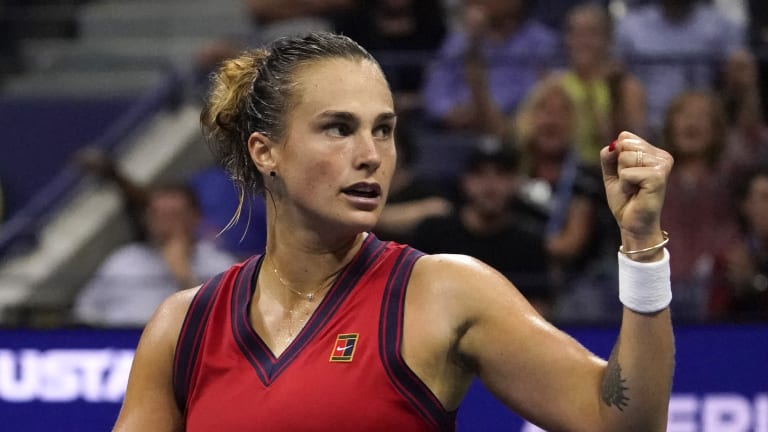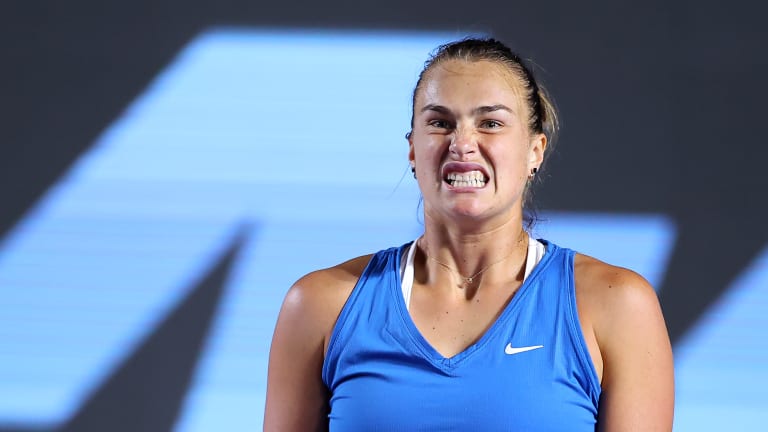WTA Finals
Aryna Sabalenka is rusty, and Paula Badosa wins in a round-robin rout at WTA Finals
By Nov 11, 2021WTA Finals
How Coco Gauff pulled off a miracle marathon win over Zheng Qinwen in Riyadh
By Nov 09, 2024WTA Finals
Coco Gauff rallies against Zheng Qinwen for first WTA Finals title in Riyadh
By Nov 09, 2024WTA Finals
WTA Finals Preview: Coco Gauff, Zheng Qinwen face off for first year-end crown in Riyadh
By Nov 09, 2024WTA Finals
Coco Gauff solves Aryna Sabalenka for first final at WTA Finals, will face Zheng Qinwen for Riyadh title
By Nov 08, 2024WTA Finals
Zheng Qinwen holds off Barbora Krejcikova to reach WTA Finals final
By Nov 08, 2024WTA Finals
WTA Finals Preview: Aryna Sabalenka vs. Coco Gauff leads semifinal slate
By Nov 07, 2024WTA Finals
Defending champion Iga Swiatek eliminated from WTA Finals despite 2-1 record, win in last match
By Nov 07, 2024WTA Finals
Barbora Krejcikova surges into WTA Finals semis, defeats Coco Gauff, eliminates Iga Swiatek
By Nov 07, 2024WTA Finals
Into WTA Finals semifinals, Zheng Qinwen hopes to match Serena Williams' 2012 feat
By Nov 06, 2024Aryna Sabalenka is rusty, and Paula Badosa wins in a round-robin rout at WTA Finals
The top seed is a wonder to watch at her very best; can she discover her peak form in her first WTA Finals appearance?
Published Nov 11, 2021
Advertising
Advertising

Sabalenka powered to back-to-back major semifinals after failing to pass the fourth round stage prior to 2021.
© AFP via Getty Images
Advertising
Advertising

Sabalenka's WTA Finals got off to a brutal start on Thursday—a 6-4, 6-0 loss to Paula Badosa.
© All rights reserved 2021 GETTY IMAGES